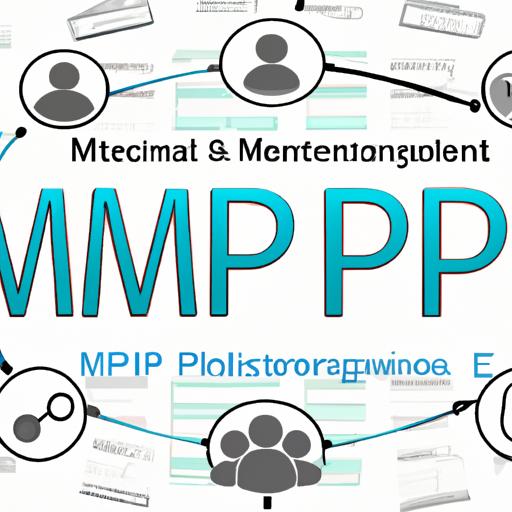What is MPI in Healthcare? Understanding Its Importance and Impact
In the vast and ever-evolving field of healthcare, efficient management and organization of patient data is crucial for delivering high-quality care. This is where the concept of Master Patient Index (MPI) comes into play. But what exactly is MPI, and why is it so essential in healthcare systems? Let’s delve into this topic and explore its significance together.
A. Definition of MPI in Healthcare
MPI, or Master Patient Index, is a comprehensive database that serves as the cornerstone of patient identification and record management in healthcare organizations. It acts as a central repository, housing a unique identifier for each patient, ensuring accurate record matching and seamless access to relevant medical information across various healthcare providers and systems.
B. Importance of MPI in Healthcare Systems
Imagine a scenario where patient data is scattered across multiple systems, with no standardized approach to identify and link individuals’ records. It would be like trying to assemble a puzzle without having all the pieces. This is where MPI steps in, acting as the glue that binds patient information together, enabling healthcare professionals to access a complete and accurate medical history, regardless of the healthcare facility or system they are using.
Without a robust MPI system in place, patient safety and care quality can be compromised. Misidentification or incomplete information may lead to errors in diagnosis, medication administration, and treatment plans. On the other hand, an effective MPI enhances care coordination, reduces duplication of tests and procedures, and ensures that the right care is provided to the right patient at the right time.
C. Overview of the Article’s Main Focus on MPI in Healthcare
Throughout this article, we will explore the various facets of MPI in healthcare. From understanding its purpose and components to discussing the benefits, implementation strategies, and future trends, we will unravel the potential of MPI in revolutionizing patient care. So, join me as we embark on this enlightening journey into the world of MPI and its impact on healthcare systems.
Stay tuned for the next section, where we will delve deeper into the concept of MPI and its role in patient identification and record matching. Let’s uncover how this fundamental tool can shape the future of healthcare delivery.
Understanding MPI in Healthcare
In order to grasp the significance of Master Patient Index (MPI) in healthcare, we must delve deeper into its definition, purpose, and the role it plays in patient identification and record matching. Additionally, we will explore the key components that make up an MPI system, as well as the potential challenges and limitations that healthcare organizations may face when implementing and utilizing MP
A. Definition and Purpose of MPI
At its core, MPI serves as a comprehensive database that acts as a centralized hub for patient identification and record management within healthcare organizations. It assigns a unique identifier to each patient, ensuring that their medical records are accurately linked and accessible across various healthcare providers and systems. The purpose of MPI is to streamline the process of patient data management, improve care coordination, and enhance patient safety.
B. Role of MPI in Patient Identification and Record Matching
When a patient seeks care from different healthcare providers or systems, it is crucial to accurately identify and match their records to ensure seamless continuity of care. MPI plays a pivotal role in achieving this by providing a standardized method of patient identification. It ensures that all relevant information, including medical history, test results, and treatment plans, is consolidated and accessible to healthcare professionals involved in the patient’s care journey.
C. Key Components of an MPI System
An MPI system comprises several key components that work together to ensure efficient patient data management. These components include:
- Unique Patient Identifier: The backbone of MPI, this identifier distinguishes each patient and serves as the primary link to their medical records.
- Demographic Data: Patient demographic information such as name, date of birth, address, and contact details are stored within the MPI system to aid in accurate identification and record matching.
- Record Linkage Mechanism: This mechanism establishes the connections between various patient records, ensuring that they are properly linked and easily accessible across different healthcare systems.
- Data Integration and Interoperability: MPI systems are designed to integrate and exchange data with other healthcare systems, allowing for seamless sharing of patient information while maintaining data integrity.
D. Potential Challenges and Limitations of MPI in Healthcare
While MPI systems offer numerous benefits, it is essential to acknowledge the potential challenges and limitations that healthcare organizations may encounter. These include:
- Data Inaccuracy and Duplication: Inaccurate or duplicate patient data can arise due to human error or system limitations, potentially leading to misidentification and compromised patient care.
- Privacy and Security Concerns: Protecting patient data privacy and ensuring secure access to MPI systems is of paramount importance to maintain patient trust and comply with data protection regulations.
- System Integration and Compatibility: Integrating MPI systems with existing healthcare systems can present technical challenges, requiring careful planning and coordination.
- Data Governance and Maintenance: Regular data maintenance and governance procedures are necessary to ensure the accuracy and integrity of patient records within the MPI system.
Stay tuned for the next section, where we will delve into the myriad benefits that MPI brings to healthcare systems. Discover how this vital tool enhances patient safety, care quality, and overall healthcare delivery.
Benefits of MPI in Healthcare
Incorporating a robust Master Patient Index (MPI) system in the healthcare landscape brings forth a multitude of benefits that positively impact patient care, operational efficiency, and data management. Let’s explore the key advantages of implementing MPI in healthcare systems.
A. Enhanced Patient Safety and Quality of Care
Patient safety is paramount in healthcare, and MPI plays a vital role in ensuring accurate identification and matching of patient records. By linking various healthcare encounters and consolidating medical information, MPI minimizes the risk of medical errors, such as misdiagnosis or administering treatments to the wrong patient. With a comprehensive view of a patient’s medical history, healthcare providers can make informed decisions, resulting in improved care outcomes and enhanced patient safety.
B. Streamlined Patient Data Management and Access
Gone are the days of sifting through stacks of paper documents or navigating disparate electronic systems to locate patient records. MPI streamlines data management by centralizing patient information, making it easily accessible to authorized healthcare professionals. This seamless access to comprehensive patient data saves valuable time, allowing clinicians to focus on delivering timely and appropriate care.
C. Improved Care Coordination and Continuity
In today’s complex healthcare landscape, patients often receive care from multiple providers and across various settings. MPI facilitates care coordination by enabling accurate patient identification and linking of records across different healthcare entities. This ensures that all providers involved in a patient’s care have access to the same up-to-date information, leading to improved care continuity, reduced redundancies, and better collaboration among healthcare teams.
D. Efficient Billing and Claims Processing
Accurate patient identification and record matching are critical for efficient billing and claims processing. With an MPI system in place, healthcare organizations can accurately link services rendered to the correct patient, reducing billing errors and claim rejections. This streamlined process not only improves revenue cycle management but also enhances patient satisfaction by minimizing billing-related issues.
E. Support for Research and Population Health Management
MPI serves as a valuable resource for research and population health management initiatives. By aggregating patient data, researchers can analyze trends, identify patterns, and gain insights into public health concerns. Additionally, MPI aids in tracking disease prevalence, monitoring outcomes, and implementing targeted interventions to improve population health.
Stay tuned for the upcoming sections, where we will explore the implementation and management of MPI in healthcare, as well as the future trends and innovations shaping the field. Together, we will uncover the full potential of MPI in revolutionizing patient care and data management.
Implementation and Management of MPI in Healthcare
As we continue our exploration of MPI in healthcare, it is crucial to understand the practical aspects of implementing and managing an MPI system. Let’s dive into the key steps, considerations, best practices, and strategies involved in harnessing the power of MPI for effective healthcare delivery.
A. Steps involved in implementing an MPI system
Implementing an MPI system requires careful planning and execution. Here are some essential steps to consider:
-
Assessing organizational needs: Begin by evaluating your organization’s unique requirements and goals. Understand the specific challenges you aim to address with an MPI system.
-
Selecting the right solution: Research and evaluate various MPI solutions available in the market. Consider factors such as scalability, interoperability, security, and user-friendliness to choose the solution that best aligns with your organization’s needs.
-
Data migration and integration: Ensure a smooth transition of existing patient data into the MPI system. Integrate the MPI with other relevant systems like electronic health records (EHRs) for seamless data exchange.
-
Staff training and education: Train your staff on the MPI system to ensure they can effectively utilize its features, understand data entry protocols, and maintain data quality standards.
B. Considerations for selecting an MPI solution
When selecting an MPI solution, keep the following factors in mind:
-
Scalability and interoperability: Choose a solution that can handle a growing volume of patient data and seamlessly integrate with other healthcare systems, facilitating information exchange.
-
Data security and privacy: Prioritize solutions that adhere to robust security standards, including data encryption, access controls, and compliance with HIPAA regulations, to safeguard patient information.
-
User interface and ease of use: Opt for an MPI system that is intuitive and user-friendly, minimizing the learning curve for your staff and ensuring efficient utilization of the system’s functionalities.
C. Best practices for maintaining and updating MPI data
To ensure the accuracy and integrity of MPI data, consider implementing the following best practices:
-
Regular data cleansing: Conduct routine audits and data cleansing processes to identify and correct duplicate or outdated patient records, improving data accuracy and reliability.
-
Data governance policies: Establish clear data governance policies and protocols to maintain standardized data entry practices, ensuring consistency and uniformity across the MPI system.
-
Record matching algorithms: Employ advanced record matching algorithms to minimize the chances of misidentifications and improve the accuracy of linking patient records.
D. Strategies for ensuring data integrity and accuracy
To maintain data integrity and accuracy within the MPI system, consider the following strategies:
-
Data validation checks: Implement automated data validation checks to identify and flag potential errors or inconsistencies in patient data, allowing for timely corrections.
-
Regular system maintenance: Conduct regular system maintenance, including updates and patches, to ensure optimal performance and minimize the risk of system vulnerabilities.
-
Ongoing staff training: Continuously train and educate your staff on data entry protocols and the importance of maintaining data integrity, fostering a culture of accountability and accuracy.
By following these implementation steps, considering the right solution, adopting best practices, and implementing data integrity strategies, you can effectively manage and leverage the power of an MPI system in healthcare. Stay tuned for the upcoming sections, where we will discuss future trends and innovations in MPI, offering a glimpse into the exciting possibilities that lie ahead.
Future Trends and Innovations in MPI for Healthcare
As the healthcare landscape continues to evolve, so does the Master Patient Index (MPI) system. Let’s dive into the exciting world of future trends and innovations that promise to shape the future of MPI in healthcare.
A. Advancements in Technology and Interoperability
With advancements in technology, healthcare organizations are embracing interoperability as a means to enhance data sharing and collaboration. Interoperable MPI systems allow seamless integration of patient information across different platforms and healthcare providers, enabling real-time access to critical data. This ensures that healthcare professionals have a comprehensive view of a patient’s medical history, leading to more informed decision-making and improved patient outcomes.
B. Integration of Artificial Intelligence and Machine Learning in MPI Systems
Artificial Intelligence (AI) and Machine Learning (ML) are revolutionizing the healthcare industry, and their potential impact on MPI systems is immense. AI algorithms can analyze vast amounts of patient data, identify patterns, and make accurate predictions, aiding in accurate patient identification and record matching. By leveraging AI and ML, MPI systems can automate the process of identifying duplicate records, reducing errors and improving data integrity.
C. Emerging Approaches for Patient Identification and Record Matching
Innovative approaches are emerging to enhance patient identification and record matching in MPI systems. Biometric identification methods, such as fingerprint or iris scanning, offer a reliable and unique way to verify patient identity. Additionally, the use of unique patient identifiers, such as Universal Patient Identifiers (UPIs), is being explored to overcome challenges associated with common identifiers like name or date of birth. These emerging approaches hold promise in ensuring accurate patient identification and eliminating potential errors.
D. Potential Impact of Blockchain Technology on MPI in Healthcare
Blockchain technology, known for its secure and decentralized nature, has the potential to revolutionize the way patient data is managed in MPI systems. By leveraging blockchain, patient data can be securely stored, accessed, and shared across multiple healthcare providers while maintaining data privacy and integrity. Blockchain can eliminate the need for a central authority, reducing the risk of data breaches and ensuring patient control over their information. The potential impact of blockchain on MPI in healthcare is vast and holds the promise of a more secure and patient-centric approach to data management.
In the next section, we will conclude our exploration of MPI in healthcare, summarizing the key points discussed throughout this article and offering final thoughts on the future of MPI in healthcare. Stay tuned for the conclusion, where we wrap up this enlightening journey.
Conclusion: Embracing the Potential of MPI in Healthcare
As we reach the end of this insightful exploration, it becomes apparent that Master Patient Index (MPI) holds immense value in the realm of healthcare. By providing a centralized system for patient identification and record management, MPI streamlines care processes, enhances patient safety, and promotes efficient data sharing among healthcare providers.
Throughout this article, we have uncovered the definition and purpose of MPI, delving into its importance in healthcare systems. We have discussed the significance of accurate patient identification and record matching, highlighting how MPI acts as the linchpin in ensuring seamless access to comprehensive medical information.
Furthermore, we have explored the numerous benefits that MPI brings to the table. From improved patient safety and care coordination to streamlined data management and efficient billing processes, the advantages of MPI are undeniable. It paves the way for enhanced collaboration among healthcare providers, leading to better patient outcomes and satisfaction.
Implementing and managing an MPI system requires careful consideration and adherence to best practices. From selecting the right solution to maintaining data integrity, healthcare organizations must prioritize the accuracy and security of patient information. By doing so, they can harness the full potential of MPI and unlock its transformative power in delivering patient-centered care.
Looking ahead, the future of MPI in healthcare is promising. Advancements in technology, such as interoperability and artificial intelligence, hold the potential to revolutionize patient identification and record matching even further. Emerging approaches and the integration of blockchain technology may reshape the way we manage patient data, ensuring its privacy and security.
In conclusion, embracing the potential of MPI in healthcare is no longer a choice but a necessity. By implementing robust MPI systems, healthcare organizations can overcome the challenges posed by fragmented data and drive positive change in patient care. Let us embark on this journey together, harnessing the power of MPI to create a brighter and healthier future for all.
Thank you for joining me on this informative expedition. Until we meet again, remember that the key to unlocking the full potential of healthcare lies in the effective utilization of tools like MPTogether, we can shape a future where patient care knows no boundaries.






